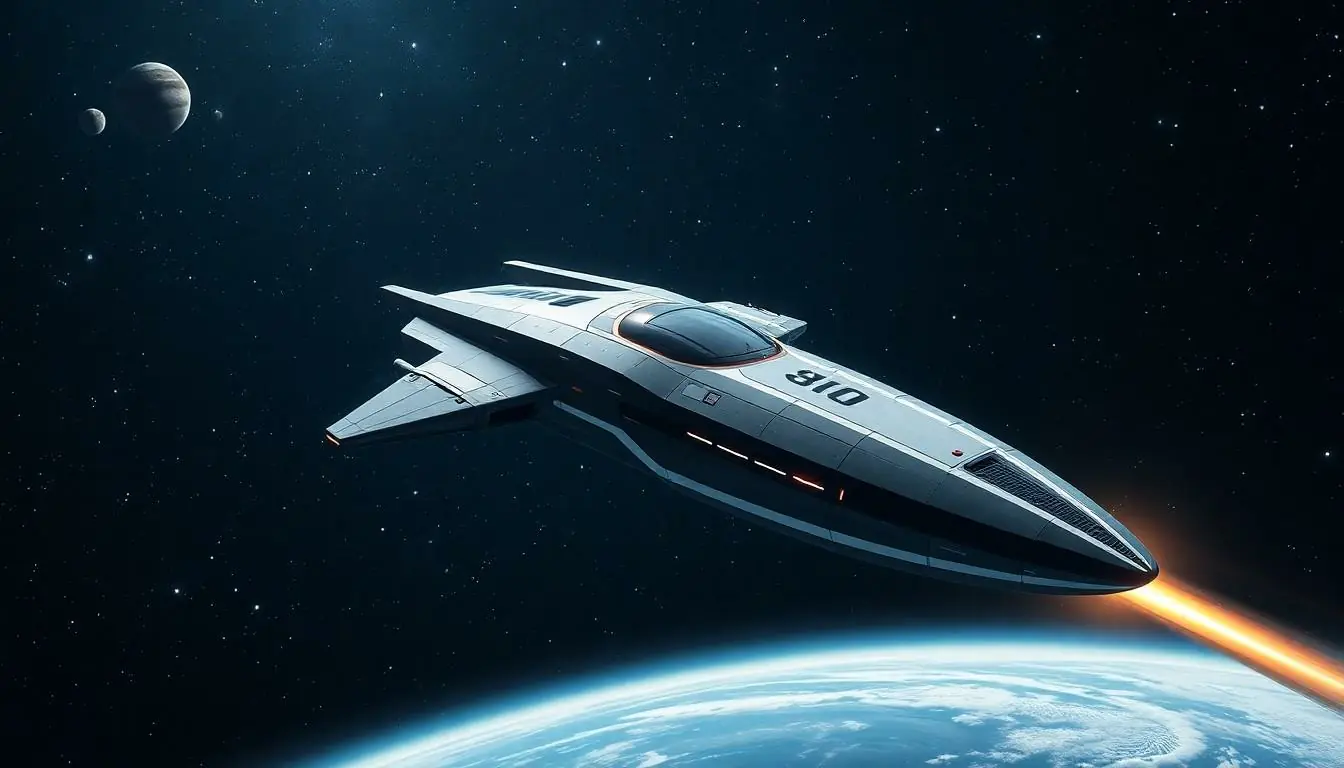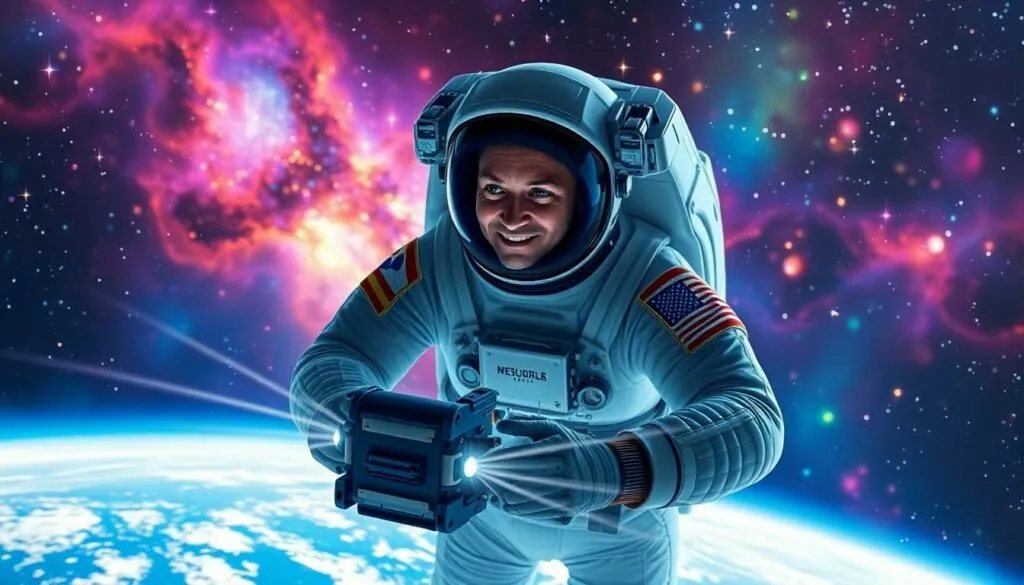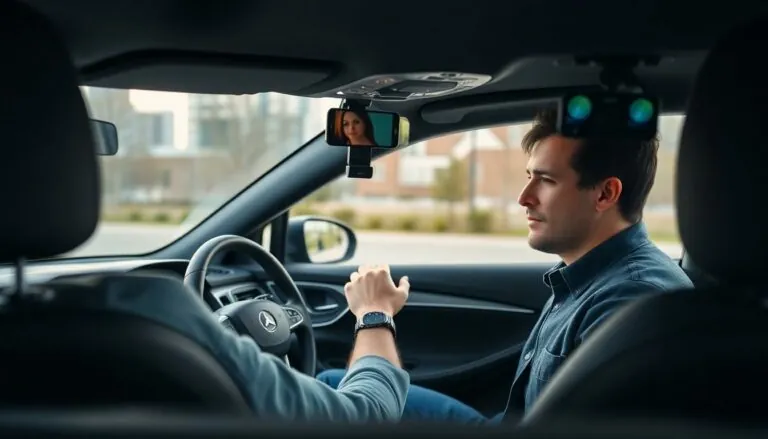Table of Contents
ToggleSpace: the final frontier. It’s not just a cool catchphrase; it’s where humanity’s greatest adventures await. As we gaze up at the stars, a world of possibilities unfolds. From rovers that zip across Martian landscapes to telescopes that peer into the depths of the universe, technology for space exploration is transforming dreams into reality.
Overview of Technology for Space Exploration
Technology drives the exploration of space, opening doors to new worlds and discoveries. Significant advancements shape the tools and systems used in missions to other planets and the vast cosmos. Robotics plays a vital role; rovers like Curiosity and Perseverance traverse the Martian surface, conducting experiments and sending data back to Earth.
Satellites serve essential functions, enabling communication and GPS services while monitoring climate and weather patterns from orbit. Deep space probes, such as Voyager 1 and 2, travel beyond our solar system, gathering valuable information about distant planets and celestial phenomena.
Telescopes, both ground-based and space-based, enhance our understanding of the universe. The Hubble Space Telescope, for instance, has provided striking images, revealing the intricacies of galaxies, nebulae, and other celestial bodies. Upcoming missions, equipped with next-generation technologies like the James Webb Space Telescope, promise to delve deeper into space and time.
Innovations in propulsion systems are crucial, too. Ion drives and nuclear thermal propulsion represent a move towards efficient travel within our solar system. These technologies reduce travel time, making distant destinations more attainable.
Life support systems ensure astronauts can thrive during long missions. Advances in artificial intelligence allow for better data analysis and decision-making in critical situations. Moreover, 3D printing creates sustainable supplies in space, reducing the need for resupply missions from Earth.
As technologies evolve, so does the potential for human exploration beyond Earth. Each breakthrough not only fuels curiosity but also sets the stage for future missions, expanding humanity’s reach into the unknown.
Key Technologies in Space Exploration

Technology continues to revolutionize space exploration, enabling unprecedented missions and discoveries. Among the most critical advancements are propulsion systems and communication technologies.
Propulsion Systems
Propulsion systems drive space vehicles and aid them in overcoming Earth’s gravity. Traditional chemical rockets dominate the current landscape, providing reliable thrust for launches. Alternative systems, such as ion drives, offer increased efficiency by utilizing electric propulsion. These systems generate thrust by ionizing propellant and accelerating ions, resulting in prolonged missions with reduced fuel consumption. Nuclear thermal propulsion stands out for the potential to provide high thrust levels, facilitating deeper space exploration. Designing efficient propulsion technologies directly impacts mission duration and cost effectiveness.
Communication Technologies
Communication technologies are essential for maintaining connections between Earth and space missions. Satellites serve as relays, transmitting data across vast distances. They also enable real-time communication with space missions, making control and analysis possible. Advances include laser communication systems, which promise higher data transfer rates compared to traditional radio frequencies. These systems can greatly enhance the volume of scientific data received. Networking multiple satellites forms constellations, ensuring consistent coverage and global communications. Effective communication is crucial for mission success and safety, allowing teams to monitor and analyze spacecraft information effectively.
Robotics and Automation in Space
Robotics and automation significantly enhance the capabilities of space missions. These technologies enable precise, controlled tasks in environments where human presence is limited.
Examples of Robotic Missions
Rovers like Curiosity and Perseverance exemplify robotic missions on Mars. Each rover conducts extensive geological surveys and analyzes soil samples on the Martian surface. Furthermore, the Mars Reconnaissance Orbiter collects high-resolution images, providing valuable data on planetary features. The Hubble Space Telescope, though not a rover, demonstrates robotic capabilities in astronomical observations, revealing deep-space phenomena. In addition, autonomous drones like Ingenuity showcase aerial exploration potential, testing flight operations in Mars’ thin atmosphere.
The Role of AI in Space Exploration
Artificial intelligence plays a critical role in enhancing space exploration efficiency. AI systems help analyze vast amounts of data from missions, identifying patterns and insights that humans may overlook. Autonomous navigation capabilities allow spacecraft to make real-time decisions during pivotal moments. For instance, AI assists rovers in obstacle detection, optimizing their paths. Moreover, predictive maintenance algorithms enhance spacecraft reliability by anticipating equipment malfunctions. Continued advancements in AI ensure increased autonomy, allowing missions to explore further into the universe without immediate human oversight.
Challenges in Developing Space Technology
Space exploration encounters significant challenges that impact the advancement of technology. Addressing these obstacles is vital for future missions.
Funding and Resource Limitations
Funding stands as a critical issue in space technology development. Governments and organizations often face budget constraints that impact project scopes. Limited financial resources can delay research and the implementation of new technologies. Funding levels for space agencies shift depending on political priorities and public interest. Consequently, innovative projects may suffer from reduced investment, hindering progress. Partnerships with private sectors increasingly emerge as potential solutions to bolster resources. Collaborative efforts can provide additional funding streams and share technological expertise, enhancing the capacity to explore space.
Technological Hurdles
Technological hurdles also pose significant challenges for space exploration. Developing reliable systems for extreme conditions requires extensive testing and iteration. Innovations in propulsion systems and life support technologies must exceed current capabilities to ensure mission success. Engineers must balance performance with safety, leading to complex design requirements. Additionally, the miniaturization of components for spacecraft creates challenges in reliability and functionality. Addressing these technological limitations often demands time and expertise, resulting in prolonged project timelines. Continuous research and development are vital for overcoming these obstacles and making cutting-edge advancements in space technology.
The Future of Space Exploration Technology
Emerging technologies continue to transform space exploration. Innovations in propulsion systems offer promising advancements, particularly ion drives and nuclear thermal propulsion. These systems provide increased efficiency, enabling deeper missions into the cosmos.
Robotics advancements shape the next generation of exploration. Rovers like Curiosity and Perseverance perform geological surveys, revealing Mars secrets. Autonomous drones, such as Ingenuity, demonstrate potential for aerial exploration. Real-time data analysis enhances mission effectiveness.
Artificial intelligence plays a critical role in upcoming missions. Enhancements in AI support data interpretation, navigation, and system maintenance. Increased autonomy allows for further exploration without constant human oversight.
Funding challenges persist, impacting the scope of space projects. Budget limitations delay research and technology implementation. Collaborations with private companies offer potential solutions, expanding resources and sharing expertise.
New communication technologies enhance data transmission efficiency. Laser communication systems promise faster data transfer rates, improving scientific data volume received from missions. Networking satellites into constellations ensures global coverage and reliable communication for mission success.
Testing and innovation remain essential in overcoming technological hurdles. Engineers focus on developing reliable systems for extreme space conditions, ensuring safety and performance balance. Continued research and development pave the way for future advancements, enhancing humanity’s ability to explore beyond Earth.
The future of space exploration hinges on the continuous evolution of technology. As advancements in propulsion systems robotics and artificial intelligence unfold they promise to unlock new frontiers. The collaboration between public and private sectors will be crucial in overcoming funding challenges and pushing the boundaries of what’s possible.
Emerging communication technologies and innovative data analysis methods will enhance mission effectiveness and safety. By investing in research and development engineers can create reliable systems capable of withstanding the harsh conditions of space. Humanity stands at the brink of a new era in exploration ready to discover the mysteries beyond our planet.




